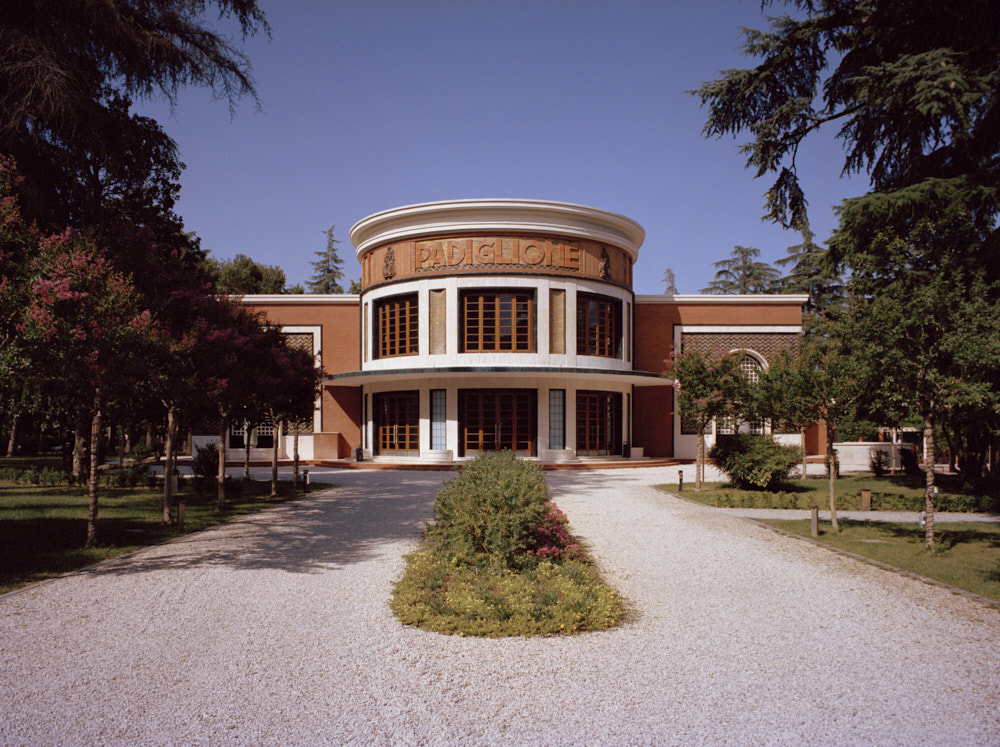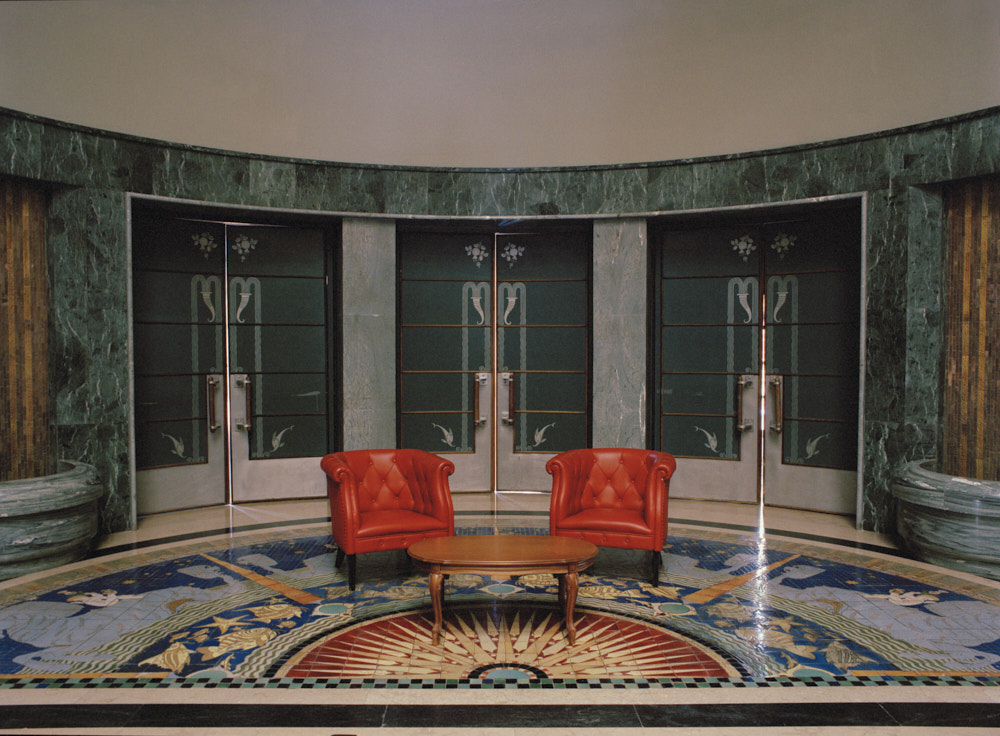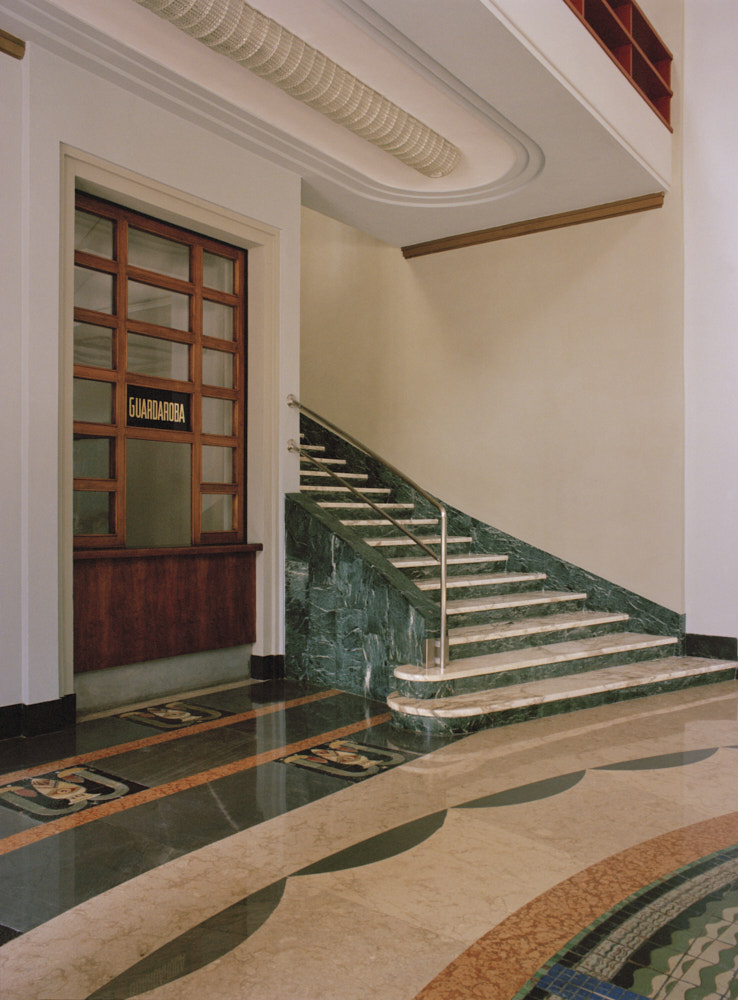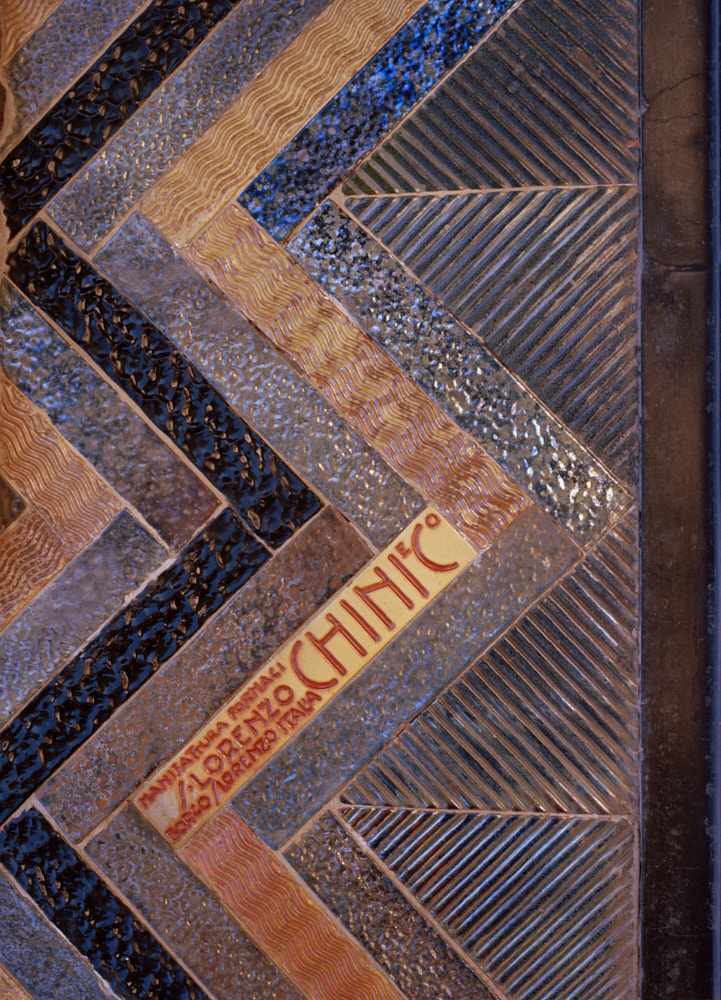












Padiglione delle Feste, Tito Chini (1936/1941) Castrocaro Terme
Abitare magazine
Testo di Luigi Prestinenza Puglisi
Tito Chini è stato protagonista sfortunato della prima metà del Novecento. Artista, pittore, decoratore, scenografo, artigiano e, come vedremo, architetto. Visse all’ombra della famiglia e del cugino Galileo Chini, più anziano e più famoso, fondatore della Manifattura delle Fornaci di San Lorenzo, la più importante fabbrica di ceramiche e vetrate Liberty d’Italia.
Tito, che dal 1925 era diventato direttore artistico della manifattura, ebbe la sua occasione con le terme di Castrocaro. Un incarico ideale. Realizzare un’opera d’arte con l’appoggio di Mussolini, il quale voleva che Castrocaro diventasse un fiore all’occhiello del regime. La località termale si trova, infatti, a 20 minuti da Predappio, in una zona della Romagna legata alla giovinezza del Duce. Era, inoltre, il periodo in cui in tutta Europa fiorivano gli stabilimenti termali e sembrava che le acque della zona favorissero la procreazione, tanto che Castrocaro fu pubblicizzata come centro per la cura della sterilità.
All’inizio sembrava tutto andasse per il meglio. Poi l’ingegnere responsabile dell’impianto, Diego Corsani, è chiamato a Roma e quindi è di fatto lasciata a Tito anche la cura dell’architettura del complesso. Tito, da perfezionista, si butta a capofitto, cercando di realizzare il sogno di tutti gli artisti dell’epoca: un’opera d’arte totale nella quale si fondono architettura, pittura, scultura, artigianato e scenografia. Un capolavoro per la straordinaria abilità di Chini di saper lavorare sfruttando la luce e le aperture della costruzione al paesaggio. Tra le decorazioni, immagini che alludono agli oceani, allo zodiaco e alle fantasiose figure delle carte da gioco. Un mondo colorato e a tratti magico costruito attraverso i migliori talenti e abilità tecniche dell’epoca, vetri di Venini compresi. Il regime ha fretta. Vuole inaugurare. Tito, incontentabile, sente che il capolavoro non è ancora completo. Rifiuta di andare alla cerimonia d’apertura in cui è presente il principe Umberto di Savoia. È il 1938. ‘Inaugurare mezzo’, come scrive a Corsani, vuol dire non capire il senso dell’opera e la fatica del suo artefice.
Tito Chini was an unfortunate protagonist of the first half of the 20thcentury. Artist, painter, decorator, stage designer, craftsman and, as we shall see, architect. He lived in the shadow of his family and his older and more famous cousin Galileo Chini, founder of the Manifattura dei Fornaci di San Lorenzo, the most important factory of Art Nouveau ceramics and stained glass in Italy.
Tito, who in 1925 had been appointed artistic director of the factory, had his opportunity with the Terme di Castrocaro. An ideal commission. To create a work of art with the support of Mussolini, who wanted Castrocaro to become a showpiece of the regime. The spa is, in fact, located just a 20 minute drive from Mussolini’s birthplace Predappio, in a part of Romagna in which the Duce spent much of his childhood. It was, moreover, a period in which spas were flourishing all over Europe and the waters of the area were said to favour procreation, so that Castrocaro was advertised as a centre for the cure of sterility.
In the beginning everything seemed to go well. Then the engineer responsible for the structure, Diego Corsani, was summoned to Rome and so Tito was left in de facto charge of the complex’s architecture as well. Tito, a perfectionist, threw himself into the job, trying to realize the dream of all artists of the time: a total work of art in which architecture, painting, sculpture, handicrafts and stage design would be fused. A masterpiece due to Chini’s ability to exploit light and the openings of the construction onto the landscape. Among the decorations, images that allude to the oceans, the Zodiac and the fanciful figures on playing cards. A colourful world created with the help of the finest talents and technical skills of the day, including Venini glass. The regime was in a hurry. It wanted the place to open. Tito, never satisfied, felt that his masterpiece was not yet complete. He refused to attend the opening ceremony, at which Prince Umberto of Savoy was present. It was 1938. ‘Half opening,’ as he wrote to Corsani, meant not understanding the sense of the work and the effort of its creator.